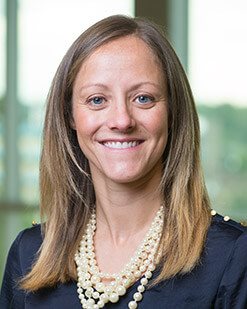Interstitial Lung Disease
As one of the largest interstitial lung disease referral centers in the United States, we have access to patients, biological samples and animal models that can help solve the mysteries of these complex diseases and improve care for patients who suffer from them.
-

Ron Balkissoon, MD, MSc, DIH, FRCPC
-

David A. Beuther, MD, PhD, FCCP
-

Russell P. Bowler, MD, PhD
-

Gregory P. Downey, MD, FRCPC
-

James H. Finigan, MD
-

Kristen Glisinski, MD
-

Steven E. Lommatzsch, MD
-

Vipin Malik, MD
-

Laurie A. Manka, MD
-

James K. O'Brien, MD, FACP, FCCP
-

Irina Petrache, MD
-

Katherine Rosen, RN, MSN, ANP-C
-

Howard Saft, MD, MS
-

Michael D. Schwartz, MD, FCCM
-

Elaine M. K. Schwartz, MD, FCCP
-

Jennifer Sederberg, NP
-

Evan L. Stepp, MD
-

Ellen Volker, MD, MSPH
-

Michael E. Wechsler, MD, MMSc
-

James Woodrow, MD
National Jewish Health has one of the largest interstitial lung disease (ILD) programs in the United States. Our clinicians treat more than 1,800 patients a year, who suffer from all types of ILD, including:
- Idiopathic pulmonary fibrosis
- Nonspecific interstitial pneumonia (NSIP) and other idiopathic interstitial pneumonias
- Familial pulmonary fibrosis
- Hypersensitivity pneumonitis
- Connective tissue or autoimmune disease-related pulmonary fibrosis
- Rheumatoid arthritis
- Scleroderma (systemic sclerosis)
- Systemic Lupus Erythematosis (Lupus)
- Anti-synthetase syndrome and other myositis-associated ILD
- Vasculitis
- Granulomatosis with polyangiitis (formerly Wegener’s Syndrome)
- Microscopic polyangiitis
- Eosinophilic granulomatosis with polyangiitis (formerly Churg-Strauss Syndrome)
- Brochiolitis syndromes
- Sarcoidosis
- Common variable immunodeficiency
- Eosinophilic lung diseases
- Langerhan's cell histiocytosis
- Idiopathic pulmonary hemosiderosis
- Lymphangioleiomyomatosis
- Pulmonary alveolar proteinosis
- All other forms of rare diffuse lung disease
National Jewish Health has a tremendous clinical research program whose investigators seek to systematically advance understanding of interstitial lung disease (ILD), including its epidemiology, natural history, and prognosis. There is particular emphasis on developing or identifying patient-reported outcome measures to assess the impact of pharmacological and non-pharmacological therapeutic interventions on patients, and to broadly assess how living with ILD affects patients’ quality of life.
- Study design
- Patient recruitment
- Biostatistics
- Clinical monitoring
- Regulatory compliance
Interstitial Lung Disease Areas of Interest
- Translational studies into the mechanisms that lead to the development of pulmonary fibrosis
- Investigation of the mechanism of myofibroblast apoptosis and survival in pulmonary fibrosis
- Investigation of signaling mechanisms that control pulmonary fibrosis
- Pre-clinical evaluation of novel therapeutic approaches to control pulmonary fibrosis
Interstitial Lung Disease Animal Models
- bleomycin injection to model resolving and sustained pulmonary fibrosis
- Intratrachel silica injections to model chronic imflammation associated fibrosis.
- Adenoviral-mediated expression of activated TGF-ß to study TGF-ß dependent fibrosis
- Hydrochloric acid instillation to model lung inflammation and fibrosis associated with the aspiration of gastic contents
Cell Cultures
- Normal, non-disease donors
- IPF patients
